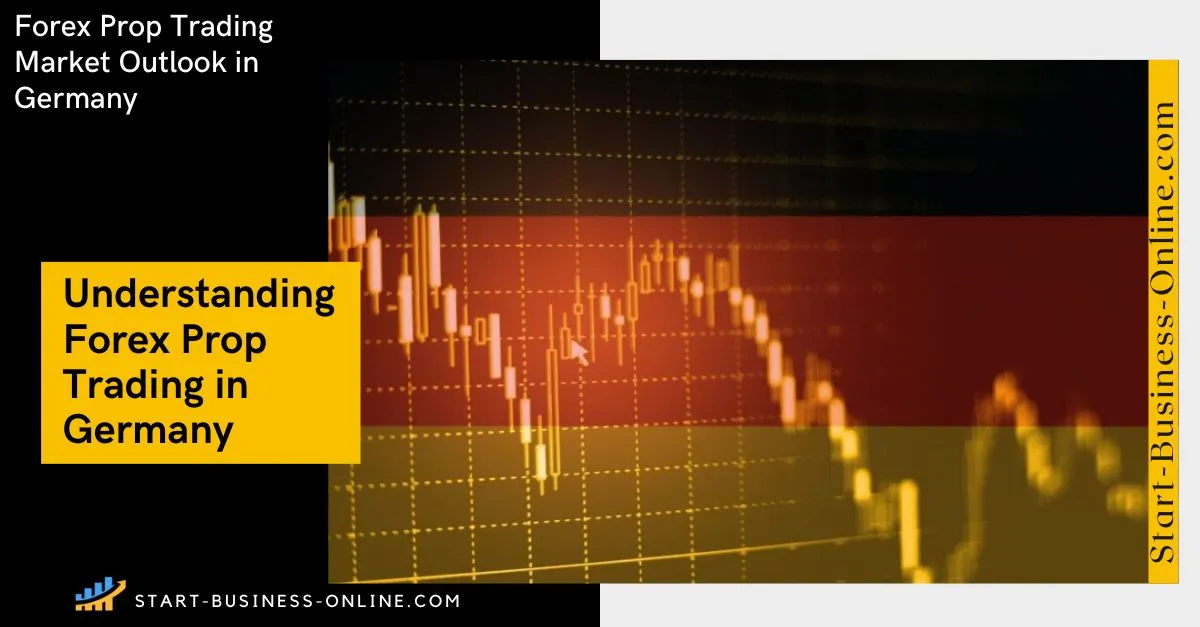Prop trading in Germany appeals to traders who prize BaFin-aware conduct standards, Frankfurt’s market infrastructure, and efficient EUR payout rails. If you’re considering prop trading in Germany, this guide explains the evaluation model, what matters under the German regulatory lens (BaFin), how to compare programs, and practical tactics to pass evaluations while managing risk in EUR.
Page Contents
- 1. TL;DR — At a Glance (DE)
- 2. Prop Trading in Germany: How It Works
- 3. Why Germany Is a Hotbed
- 4. Regulatory Snapshot (DE): BaFin & Payout Rails
- 5. Costs & Expected Value (EV) in EUR
- 6. Table A — Common Evaluation Models (Directional, EUR)
- 7. Table B — Pass/Fail EV Sketch (Illustrative, EUR)
- 8. Drawdown Architectures — Enforcement Nuances
- 9. Worked Sizing Example (EUR, Illustrative)
- 10. 30-Day Pass Plan (DE, Two-Step)
- 11. Starter Playbooks (DE Sessions)
- 12. 1) DAX Mean-Reversion
- 13. 2) Gold Momentum
- 14. 3) EURUSD Swing with News Filters
- 15. Germany Checklist & Payout Rails
- 16. Shortlist & Quick Picks (Germany-Friendly)
- 17. Pros & Cons
- 18. Tips to Pass (DE)
- 19. Stats & Insights (DE Context)
- 20. Conclusion (DE)
- 21. Prop Trading in Germany — FAQs
- 22. Related Reading
View more
TL;DR — At a Glance (DE)
- Model: Pass evaluation → access funded (often simulated) capital → respect daily/max DD → share profits.
- Targets (directional): Two-step tracks often ~6–10% with ~8–12% max DD; daily loss ~4–5% typical.
- German lens (BaFin): Distinguish simulation-only with contractual payouts from distribution of CFDs/leveraged products to German retail—marketing/conduct rules may apply.
- Budgeting in EUR: Evaluation + resets + platform/data + payout/FX/SEPA fees → compute EV per attempt.
- Execution: Size from the strictest rule; cap daily attempts; avoid stacking correlated DAX/FX risk.
Prop Trading in Germany: How It Works
Prop trading in Germany mirrors global practice: pass an evaluation with defined risk limits and minimum activity rules, then manage a funded (often simulated) account on MT5, cTrader, TradeLocker, or DXtrade. Reputable operators keep rulebooks stable and run punctual payouts to German bank accounts via SEPA.
Why Germany Is a Hotbed
- Financial center: Frankfurt’s ecosystem supports liquidity and robust connectivity across Berlin, Munich, Hamburg, and Cologne.
- Rule-driven edge: Evaluation constraints improve trade selection and risk hygiene.
- Scaling & payouts: Splits commonly 70/30–90/10; strong performers unlock larger allocations and tighter payout windows.
Directional insight: Budget your worst-case path—intraday enforcement + daily cap—not just end-of-day arithmetic.
Regulatory Snapshot (DE): BaFin & Payout Rails

- BaFin (Bundesanstalt für Finanzdienstleistungsaufsicht): Supervises financial services. If a program issues or distributes CFDs/leveraged products to German retail, applicable rules and disclosures can apply.
- Program structure: Many challenges operate on simulated accounts with contractual payouts; others are linked to OTC derivatives via partner brokers. Confirm the structure for German residents.
- Payout rails: SEPA is standard; some processors offer Giropay/Sofort/Klarna pathways. Verify fees, thresholds, and timelines.
Bottom line: The prop model is allowed; the key question is whether regulated products are being marketed/distributed to German retail and under what permissions.
Costs & Expected Value (EV) in EUR
- Upfront: Evaluation fee.
- Variable: Resets, platform/data, payout/FX/SEPA fees.
- Hidden: Time cost, slippage around ECB/US prints, trailing DD stress.
Table A — Common Evaluation Models (Directional, EUR)
Note: Ranges are budgeting aids—confirm current pricing before purchase.
| Model | Profit Target | Max DD | Daily Loss | Min Days | Typical Fee Range (EUR) |
|---|---|---|---|---|---|
| 1-Step | ~8–10% | ~8–10% | ~4–5% | 0–5 | €160–€480 |
| 2-Step | ~6–10% / 4–8% | ~8–12% | ~4–5% | 5–10 | €130–€390 |
| Instant | Lower targets; stricter rules | ~6–10% | ~3–5% | 0–3 | €270–€800 |
Table B — Pass/Fail EV Sketch (Illustrative, EUR)
| Assumption | Value (EUR) |
|---|---|
| Evaluation Fee | €240 |
| Average Resets per Pass | 1 (€120) |
| Expected First Payout | €840 |
| Estimated Pass Probability | 25% (directional) |
| Expected Cost | €360 |
| Expected Benefit | 0.25 × €840 = €210 |
Decision lens: Improve pass odds with a hard daily stop, position caps, and no “second chances” after −1R/−2R for the day.
Drawdown Architectures — Enforcement Nuances
- Equity vs Balance: Equity DD counts floating P/L; balance DD references closed equity.
- Static vs Trailing: Trailing reduces cushion after new highs; static fixed.
- Intraday vs EOD: Intraday rules demand path-aware sizing—plan for adverse swings, not just net change.
Worked Sizing Example (EUR, Illustrative)
Daily loss cap = €1,800. For DAX (GER40) CFD, assume ~€25/point per standard lot (directional). With a 20-point stop, risk ≈ €500 per lot.
Target ≤ 70% of daily cap → 0.70 × 1,800 = €1,260 risk/day Max lots if 1 trade = 1,260 / 500 ≈ 2.52 → use 2 lots If 2 trades/day = 630 per trade → 630 / 500 ≈ 1.26 → 1 lot per trade 30-Day Pass Plan (DE, Two-Step)
- Days 1–3: Platform/fill checks during Xetra open and US session; smallest size; screenshot fills.
- Days 4–10: One playbook (DAX mean-reversion or gold momentum); 1–2 trades/day.
- Days 11–16: Maintain pace; no new strategies mid-phase.
- Days 17–22: Avoid high-volatility prints (IFO, ECB, NFP) unless allowed by rules.
- Days 23–27: Close remaining target with A+ setups; no revenge trades.
- Days 28–30: Trade only if necessary—and only A+ signals.
Starter Playbooks (DE Sessions)
1) DAX Mean-Reversion
- When: Frankfurt/Xetra open (~09:00 CET/CEST) and NY morning overlap.
- Execution: Fade 2–3× ATR extensions into VWAP; take profits at VWAP/previous structure.
2) Gold Momentum
- When: London–NY overlap (~19:00–23:00 CET/CEST).
- Execution: Break of session high with ATR stop; partials at 1.0R/1.5R; 20-EMA trail.
3) EURUSD Swing with News Filters
- When: Asia→London transition; avoid ECB/US CPI/FOMC windows if rules restrict news trading.
- Execution: Break-retest + RSI divergence; targets at prior swing/2.0R.
Germany Checklist & Payout Rails
- Structure: Simulation-only vs CFD distribution—ask for clarity and, if claimed, license references.
- Drawdown math: Equity/balance; static/trailing; intraday/EOD.
- Payouts: SEPA preferred; some processors use Giropay/Sofort/Klarna—confirm fees and timings.
- All-in cost: Evaluation + resets + platform/data + payout + FX.
- Evidence: Payout proofs; support SLAs; stable T&Cs.
Shortlist & Quick Picks (Germany-Friendly)

Use this starting universe to explore options. Inclusion ≠ endorsement; verify German fit before paying.
- FTMO — Two-step; deep education/resources. Best for: process-driven traders.
- The5ers — Flexible timelines/scaling. Best for: consistency profiles.
- E8 / E8 Markets — Polished dashboards; 1–2 step options. Best for: UX lovers.
- DNA Funded / True Forex Funds — Competitive fees; verify payout speed/stability.
- Region-friendly picks: Programs that clearly accept German applicants and outline SEPA payout guidance.
The Best Prop Trading Firms in 2025
Rating breakdown
Things we liked:
Exclusive Discount Code (20% Off Exclusive Offer)Unlimited time for completion
Real Funding and Daily Payouts
Things we didn't like:
High challenge difficultyRating breakdown
Things we liked:
Exclusive Discount Code (10% Off Exclusive Offer)Unlimited time for completion
Real Funding and Daily Payouts
Things we didn't like:
Futures onlyNo free retry
Rating breakdown
Things we liked:
Up to 100% Profit SplitUnlimited Number of Trading Days
Fast Payouts
Things we didn't like:
10% Max Loss Limit on Accounts$10 Withdrawal Processing Fee
No swap free accounts
| Prop Firm | Prop firms that restrict clients from Germany |
|---|---|
| Toptier Trader |
Pros & Cons
- Pros: Scalable capital; high splits; rule-driven discipline; robust EUR rails and platforms.
- Cons: Evaluation/reset costs; complex rulebooks; potential payout/FX frictions if not optimized.
Tips to Pass (DE)
- Engineer to the daily cap (worst day ≤ 60–70%).
- ATR-normalize risk; limit correlated exposure (DAX + EUR risk).
- Daily kill switch at −1R/−2R; stop trading for the day.
- Prefer A+ setups during London–NY overlap; avoid thin liquidity.
- Journal screenshots; reconcile fills with statements.
Stats & Insights (DE Context)
- Retail-facing props grew quickly post-2020 (directional estimate: hundreds of thousands of users globally).
- Payout cycles: often biweekly or monthly; common thresholds US$100–$250 equivalent.
- Typical two-step targets: ~6–10% with ~8–12% max DD; daily loss commonly ~4–5%.
Conclusion (DE)
Prop trading in Germany can be a professional, scalable pathway—choose transparent operators, size to the strictest constraint, document your process, and scale only after withdrawals.
Prop Trading in Germany — FAQs
The prop model itself is allowed. The key issue is whether any regulated product is being marketed to German retail without proper permissions. Many challenges are simulations with contractual payouts—verify which model you’re joining.
It varies widely. Focus on risk-adjusted performance in EUR, payout %, and account size. Smooth equity curves usually outperform volatile spikes under firm risk limits.
Potentially—size from the strictest limit (often daily loss), reduce correlation across pairs/commodities, and stop trading for the day after a predefined drawdown (e.g., −1R/−2R).
The London–New York overlap (≈ 3:00 PM–7:00 PM CET / 4:00 PM–8:00 PM CEST) often has superior liquidity and clearer directional moves. Exclude major data releases if your rules prohibit news trading.
Some providers or their payment processors support them directly; others rely on standard bank transfers. Name-matched KYC and clean documentation speed things up.
With ~1.2R average outcome and ~45% win rate, roughly 9–12 quality trades can reach it. Discipline and selectivity typically trump frequent trading.
Related Reading
How to Choose a Prop Firm • Beginner-Friendly Challenges • Cheapest Challenges








